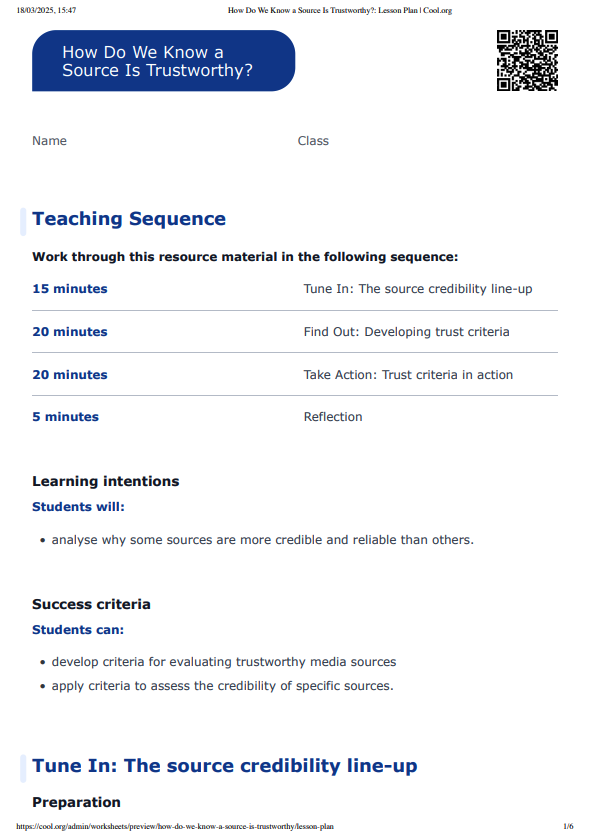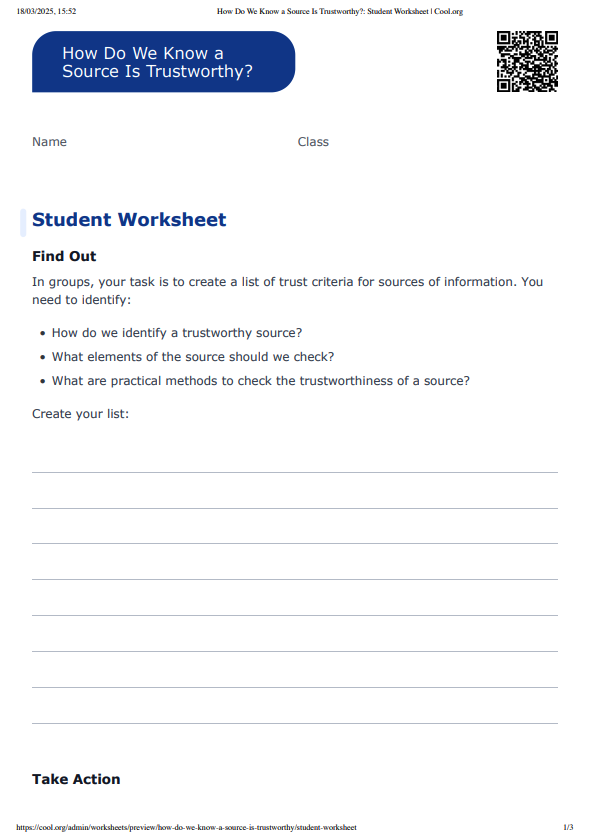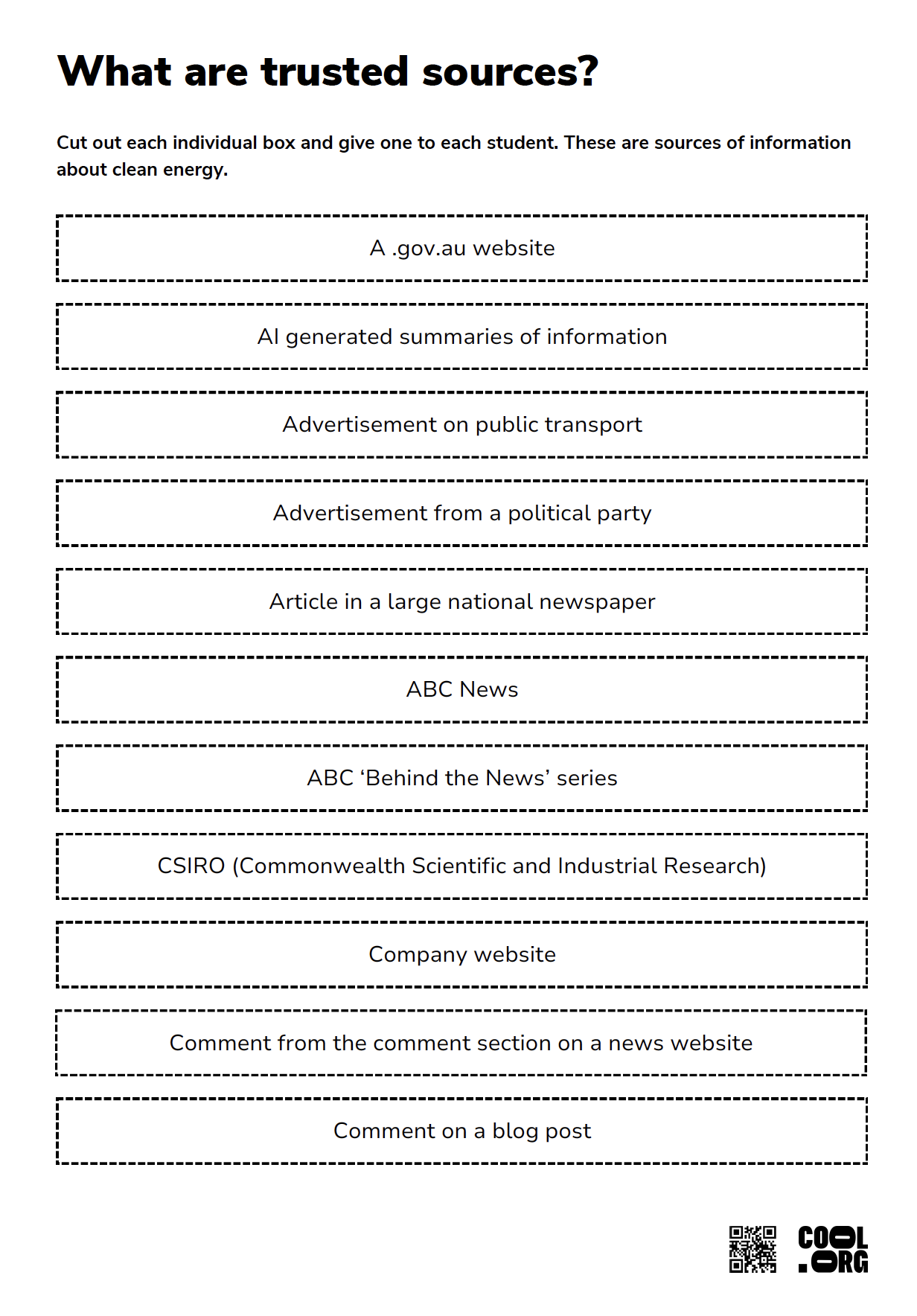Lesson summary
Students will learn how public sources of information are shaped by their originators by developing and using a list of criteria to check sources of information for their relevance and/or trustworthiness on a current public affair or issue.
Learning intentions:
Students will...
- analyse why some sources are more credible and reliable than others.
Success criteria:
Students can...
- develop criteria for evaluating trustworthy media sources
- apply criteria to assess the credibility of specific sources.
Lesson guides and printables
Curriculum links
Select your curriculum from the options below.
Lesson details
Skills
This lesson is designed to build students’ competencies in the following skills:
- critical thinking
- communication
- ethical understanding
- intercultural understanding
- global citizenship
- reflection
- social skills
Curriculum Mapping
Australian Curriculum (v9.0) content description:
Year 9, Civics and Citizenship
Students learn:
- how and why individuals and groups, including community, religious and cultural groups, participate in and contribute to civic life in Australia and to global citizenship (AC9HC9K05).
Year 10, Civics and Citizenship
Students learn:
- the challenges to and ways of sustaining a resilient democracy and a cohesive society in Australia and/or in our region or globally (AC9HC10K05).
Relevant parts of Year 9 Civics and Citizenship achievement standards: Students identify the reasons individuals and groups participate in and contribute to civic life nationally and globally.
Relevant parts of Year 10 Civics and Citizenship achievement standards: Students identify and explain challenges to a resilient democracy and a cohesive society in Australia.
NSW Syllabus outcomes:
A student:
- evaluates the roles and responsibilities of individuals within the Australian community (WE5-4).
General capabilities: Critical and Creative Thinking, Literacy, Personal and Social Capability, Ethical Understanding
Cross-curriculum priority: Sustainability
Level of teacher scaffolding: Medium - the teacher must facilitate discussion, encourage critical thinking about sources, and provide contextual information where needed (for example, what is UNESCO?).
Resources Required
- What are trusted sources? activity sheet
- Student devices
- Student Worksheet
UN Sustainable Development Goals
UN SDG 7: Affordable and Clean Energy
- Target 7.1: By 2030, ensure universal access to affordable, reliable and modern energy services.
UN SDG 11: Make cities and human settlements inclusive, safe, resilient and sustainable
- Target 11.6: By 2030, reduce the adverse per capita environmental impact of cities, including by paying special attention to air quality and municipal and other waste management.
UN SDG 12: Ensure sustainable consumption and production patterns
- Target 12.2: By 2030, achieve the sustainable management and efficient use of natural resources.
Additional Info
Cool.org thanks our philanthropic funder, Boundless Earth for their generous contributions and collaboration in creating these resources.




Welcome back!
Don't have an account yet?
Log in with:
Create your free Cool.org account.
Many of our resources are free, with an option to upgrade to Cool+ for premium content.
Already have an account?
Sign up with:
By signing up you accept Cool.org's Terms and Conditions(Opens in new tab) and Privacy Policy(Opens in new tab).